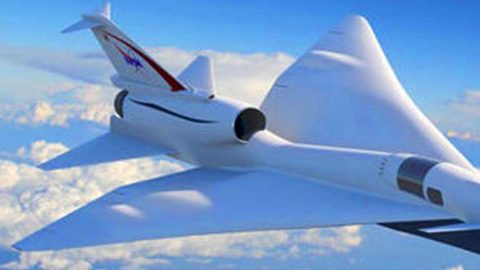
(Lockheed-Martin/NASA)
The Concorde was once the most luxurious way to fly, with style, class, elegance and of course supersonic speeds. It could take passengers from London to New York City in just under three hours but the program was discontinued in 2003 amid safety concerns. Now after a 14-year absence, a new and improved Concorde is returning to the skies thanks to NASA and Lockheed-Martin.

The main concern of the original Concorde was the massive shockwaves it produced when flying past supersonic speeds. Due to the sonic booms, the Concorde was only permitted to fly over bodies of water in order to avoid noise complaints. Now the engineers at NASA have found a way to isolate the sonic boom to turn it into more of a sonic whisper which will allow the new Concorde to fly over land.
The project goes by the name “QueSST” which stands for Quiet Supersonic Technology, will fly at speeds of 2,100 mph at a height of 55,000 feet which will be far removed from most audible ranges. The jet has also been engineered to produce only 60 decibels of sound as opposed to the original Concorde which produced 90 decibels.
“In the nearer term, NASA’s development of quiet supersonic flight technology needs support, interest, and engagement from the community to ensure that the potential sound is acceptable to those on the ground.”
– NASA
The introduction of this technology could redefine commercial aviation as we know it. The initial testing of the Concorde’s successor could begin as early as 2021, the film of designs and test models can be viewed in this clip.